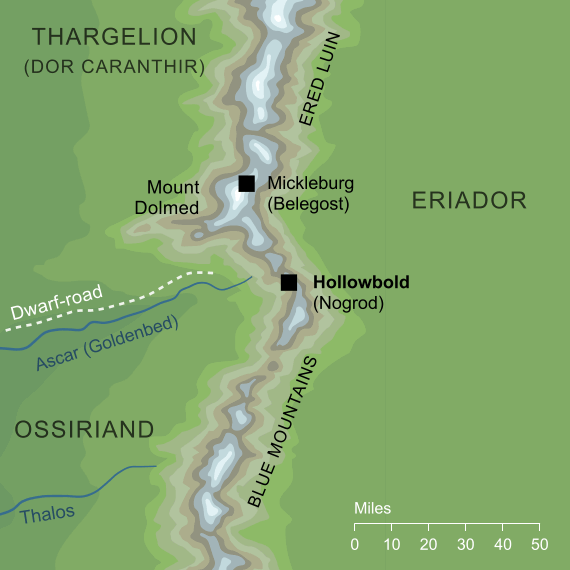- Cities and buildings
- Fields, plains and deserts
- Forests
- Hills and mountains
- Islands and promontories
- Lands, realms and regions
- Rivers and lakes
- Seas and oceans


|
||||||||
|


Which personality type are you?
Take the Free mydiscprofile Personality Test to discover your core personality and your ideal job.   Which personality type are you? |
|
Dates
Founded long before1 the Return of the Noldor to Middle-earth; destroyed in the War of Wrath at the end of the First Age
Location
South of Mount Dolmed, in Ered Luin
Race
Division
Not certainly known2
Pronunciation
ho'llowbold
Meaning
'Hollow dwelling'3
Other names
Indexes: About this entry:
|
HollowboldA Dwarvish citadel among the Blue Mountains
The Mannish name for the southern of the two great Dwarf-cities in the Blue Mountains. The Dwarves themselves named it Tumunzahar, but Nogrod is the name by which it is best remembered in the histories of the First Age. The name 'Hollowbold' seems to be a more accurate rendering of the Dwarves' own name for their city: it comes from the Old English for 'hollow dwelling' or 'carved dwelling' (Elvish Nogrod means something rather closer to 'Dwarf-cavern'). Notes
Indexes: About this entry:
For acknowledgements and references, see the Disclaimer & Bibliography page. Original content © copyright Mark Fisher 2008, 2022. All rights reserved. For conditions of reuse, see the Site FAQ. Website services kindly sponsored by Discus from Axiom Software Ltd.Discus offers full translations of the entire software into selected languages with even more to come. |